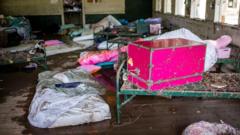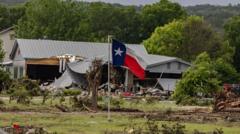Reports indicate that U.S. regulators allowed Camp Mystic to contest flood risk designations, raising concerns about safety measures prior to a deadly flood event in Texas this July.
Flood Risk Maps Exempted Camp Mystic Ahead of Tragic Texas Flood

Flood Risk Maps Exempted Camp Mystic Ahead of Tragic Texas Flood
Investigations reveal that Camp Mystic cabins were removed from flood risk maps prior to disastrous flooding that led to the loss of 27 lives.
U.S. regulatory bodies reportedly removed many Camp Mystic buildings from official flood risk maps years before a catastrophic flood event resulted in the deaths of 27 children. As reported by the New York Times and the Associated Press, maps created by the Federal Emergency Management Agency (FEMA) in 2011 initially classified the beloved summer camp, situated by the Guadalupe River, as being at a high flood risk. However, it appears that Camp Mystic successfully appealed to have these designations changed.
Neither FEMA nor Camp Mystic has publicly commented on the implications of this decision. FEMA defines flood maps as essential tools that aid communities in identifying high-risk areas for flooding. Experts, including Syracuse University professor Sarah Pralle, have expressed confusion over the exemptions granted to Camp Mystic, especially considering it is a facility frequented by children. Prof. Pralle raised concerns about the prudence of not exceeding minimum flood protection standards in such cases.
FEMA's original flood maps identified some Camp Mystic cabins as situated within a "floodway," a particularly dangerous zone prone to severe inundation, while others fell within a broader area expected to flood every 100 years. Such classifications necessitated that the camp maintain flood insurance and adhere to stricter building regulations, but it has been reported that FEMA did not alter the flood maps to reflect Camp Mystic's appeals.
The tragic flooding on July 4 resulted in the loss of at least 27 young girls at the camp, alongside a reported 129 fatalities statewide, with many more missing. President Donald Trump visited the affected areas, offering assurances of governmental support for rebuilding efforts and lamenting the devastation he witnessed. When asked about possible failings in preemptive flood warnings, Trump's dismissive response raised further questions regarding evacuation protocols and the overall adequacy of advance notifications.
Experts continue to emphasize that various factors, such as the timing of the flood and the positioning of certain buildings, contributed considerably to the disaster's severity, leading to a renewed discourse surrounding flood safety standards and community preparedness in vulnerable regions.

















